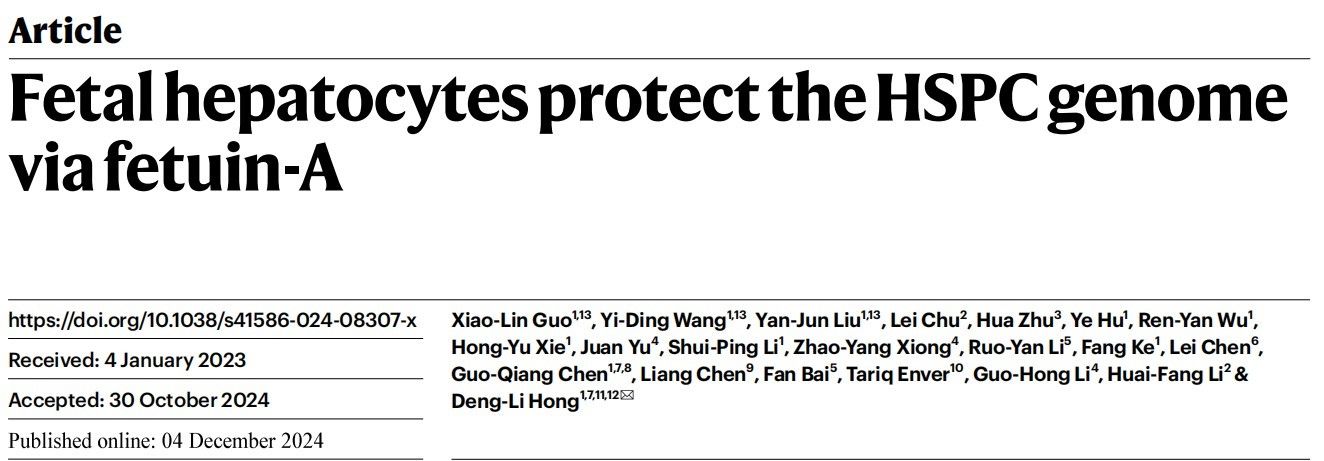On December 5, 2024 (Beijing time), Dengli Hong's research group from the College of Basic Medical Sciences, Shanghai Jiao Tong University, published a groundbreaking article in Nature titled "Fetal hepatocytes protect the HSPC genome via fetuin-A."
The study reveals the mechanism of embryonic tissues protect the genomic stability of their stem cells and demonstrates that this mechanism is related to the occurrence of developmental diseases such as childhood cancers. These findings will provide important theoretical and experimental guidance for further research into the pathogenesis and preventive medicine of developmental diseases. Based on the mechanisms uncovered, diagnostic kits or drugs could be developed to predict and prevent the occurrence of childhood leukemia.

Abstract
The maintenance of genomic integrity in rapidly proliferating cells is a substantial challenge during embryonic development. Although numerous cell-intrinsic mechanisms have been revealed, little is known about genome-protective efects and infuences of developmental tissue microenvironments on tissue-forming cells. Here they first revealed that fetal liver hepatocytes provide protection to haematopoietic stem and progenitor cell (HSPC) genomes. Lineage tracing and depletion in mice demonstrated that delayed hepatocyte development in early fetal livers increased the chromosomal instability of newly colonizing HSPCs. In addition, HSPCs developed tolerance to genotoxins in hepatocyte-conditioned medium, suggesting that hepatocytes protect the HSPC genome in a paracrine manner. Proteomic analyses demonstrated the enrichment of fetuin-A in hepatocyte-conditioned medium but not in early fetal livers. Fetuin-A activates a Toll-like receptor pathway to prevent pathogenic R-loop accumulation in HSPCs undergoing DNA replication and gene transcription in the fetal liver. Numerous haematopoietic regulatory genes frequently involved in leukaemogenic mutations are associated with R-loop-enriched regions. In Fetua-knockout mice, HSPCs showed increased genome instability and susceptibility to malignancy induction. Moreover, low concentrations of fetuin-A correlated with the oncogenesis of childhood leukaemia. Therefore, we uncover a mechanism operating in developmental tissues that ofers tissue-forming cell genome protection and is implicated in developmental-related diseases.

This is a coral reef in the ocean. It provides the fishes with a nice habitat and a strong defense against the attack of sharks. When the corals are small in size and in number, the sharks will be dangerous to the fishes without the protection of the corals. The oral reef stands for a fetal liver, the corals the hepatocytes, the fishes the HSPCs, the harks the genotoxic agents.
Link:https://doi.org/10.1038/s41586-024-08307-x
Xiaolin Guo (Assistant Researcher, College of Basic Medical Sciences), Dr. Yiding Wang (PhD student), and Yanjun Liu (PhD candidate) are listed as co-first authors of the paper, with Dengli Hong serving as the corresponding author.




